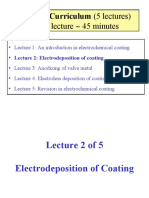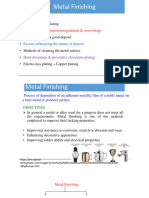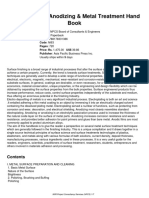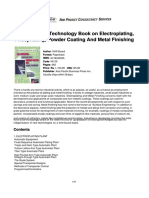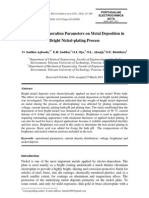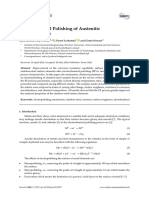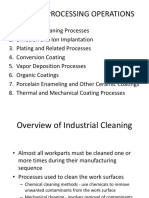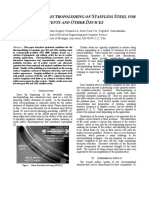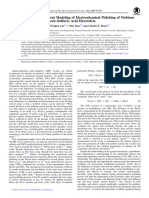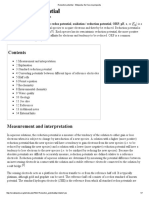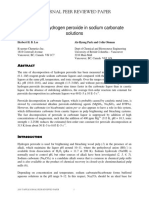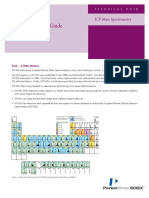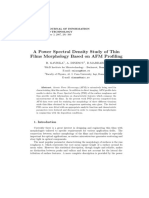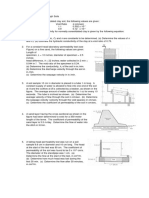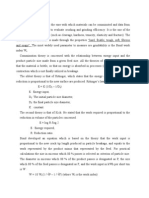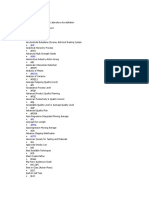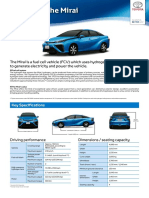0% found this document useful (0 votes)
168 views2 pagesHow To Remove Nickel Oxide: Flow Cell - To Increase The Fluid Dynamics
Here are some potential options to try removing the oxidation layer with minimal damage to the polished surface:
- Electrolytic treatment in a weak acid like 5% sulfuric acid. Applying a forward polarity current will generate hydrogen bubbles that can help reduce the oxides without damaging the nickel plating.
- Immersion in dilute ammonia. Ammonia is a good solvent for metal salts like nickel oxides and could dissolve the oxidation layer.
- Sputter etching in a vacuum chamber. Applying a low energy ion beam can bombard and remove surface oxides without significantly altering the underlying plated surface.
- Very fine polishing with 0.5 micron or less diamond paste. Polishing can abrade away
Uploaded by
Geetha ThiruvengadamCopyright
© © All Rights Reserved
We take content rights seriously. If you suspect this is your content, claim it here.
Available Formats
Download as DOC, PDF, TXT or read online on Scribd
0% found this document useful (0 votes)
168 views2 pagesHow To Remove Nickel Oxide: Flow Cell - To Increase The Fluid Dynamics
Here are some potential options to try removing the oxidation layer with minimal damage to the polished surface:
- Electrolytic treatment in a weak acid like 5% sulfuric acid. Applying a forward polarity current will generate hydrogen bubbles that can help reduce the oxides without damaging the nickel plating.
- Immersion in dilute ammonia. Ammonia is a good solvent for metal salts like nickel oxides and could dissolve the oxidation layer.
- Sputter etching in a vacuum chamber. Applying a low energy ion beam can bombard and remove surface oxides without significantly altering the underlying plated surface.
- Very fine polishing with 0.5 micron or less diamond paste. Polishing can abrade away
Uploaded by
Geetha ThiruvengadamCopyright
© © All Rights Reserved
We take content rights seriously. If you suspect this is your content, claim it here.
Available Formats
Download as DOC, PDF, TXT or read online on Scribd
/ 2












